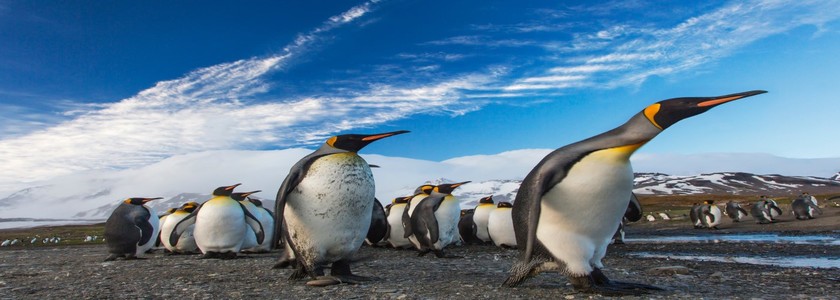

The Halley Bay colony of Emperor penguins in the Weddell Sea of Antarctica is the second largest group in the world, with number of breeding pairs between 14,000-25,000. That is around 5-9% of the global Emperor penguin population. Well, it was; researchers from British Antarctic Survey (BAS) studied very high resolution satellite images and found some unusual findings. They found that these penguins have failed to raise chicks for the last three years. Why is this happening?
For the last 60 years, the sea ice in the Halley Bay area has been stable and reliable for the penguins. Emperor penguins need this stable sea ice to breed. They need it to last from April, when their babies are born, until December, when their chicks are fledged. In late 2016, there was a period of abnormally stormy weather and the sea ice broke up that October. This was bad news because the Emperor chicks were too young to flee, which resulted in death. The pattern repeated in 2017 and again in 2018. This led to the death of almost all the chicks at the site each season. The failure to raise chicks for three consecutive years is associated with changes in the sea ice.
Sadly, the colony of penguins at Halley Bay have pretty much disappeared. The good news is that there is a nearby colony of Emperor penguins, the Dawson Lambton colony, that has increased in size. This indicated that many of the adult penguins from Halley Bay have moved there, seeking better sea ice to breed and more stable conditions. Before satellite imagery, it was unknown if the penguins would seek alternate colonies in response to significant changes in their environment.
Lead remote sensing specialist Dr. Peter Fretwell at BAS says that the satellite image can detect individuals and penguin huddles, and therefore, can estimate the population. This is based on the density of the groups to give a good estimate on colony size. He also mentions that, while even taking into account levels of ecological uncertainty, published models suggest that Emperor penguin numbers are set to fall dramatically before the end of this century. Numbers could be as high as to 50-70% of the population gone, as sea ice conditions change resulting from the effects of climate change.
Using satellite imagery to study the behavior of Emperor penguin colonies and its response to changing sea ice, this will give scientists more information on how these penguins might cope with future environmental changes. More on this study can be found in the journal of Antarctic Science (25 April 2019).